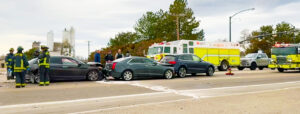Aggressive driving happens when a driver deliberately disregards road safety and performs dangerous maneuvers to elicit responses from other motorists. It might seem absurd to drive dangerously on purpose, but it is common in the United States, with around 80% of drivers admitting to doing so in 2019 alone.
These driving behaviors could include driving practices usually done due to stress, anger or agitation, such as the following:
- Cutting off other drivers
- Running stop signs and red lights
- Driving in and out of traffic inappropriately
- Intentionally changing lanes without using signals
- Obstructing other drivers who are trying to switch lanes or pass
- Speeding
- Tailgating
- Using headlights to affect other drivers’ vision
These aggression-motivated actions can also bring out anger as a response from other drivers. Authorities advise against responding to aggressive driving behavior. However, these altercations could escalate and lead to road rage incidents.
What are examples of road rage?
Road rage is a more direct form of aggression, potentially involving violent threats and actions. Examples of this behavior include the following:
- Swearing and provoking others
- Throwing objects to harm others
- Performing dangerous driving maneuvers with the intent to threaten or cause harm
- Confronting another driver with threats or physical violence
An unexpected encounter with an aggressive driver could quickly become a road rage incident. Ideally, drivers should remain calm and stay away from these drivers to avoid risking themselves and their passengers.
Dealing with aggressive drivers
Authorities advise against engaging with aggressive drivers who might endanger themselves or other motorists. Maintaining a safe distance from an aggressive driver is the best way to prevent getting caught in an accident if they suddenly lose control of their car.
Additionally, drivers should gauge the situation carefully and call for help if necessary. Some aggressive drivers could target and follow others. If so, victims could contact law enforcement, who can help de-escalate the situation.



